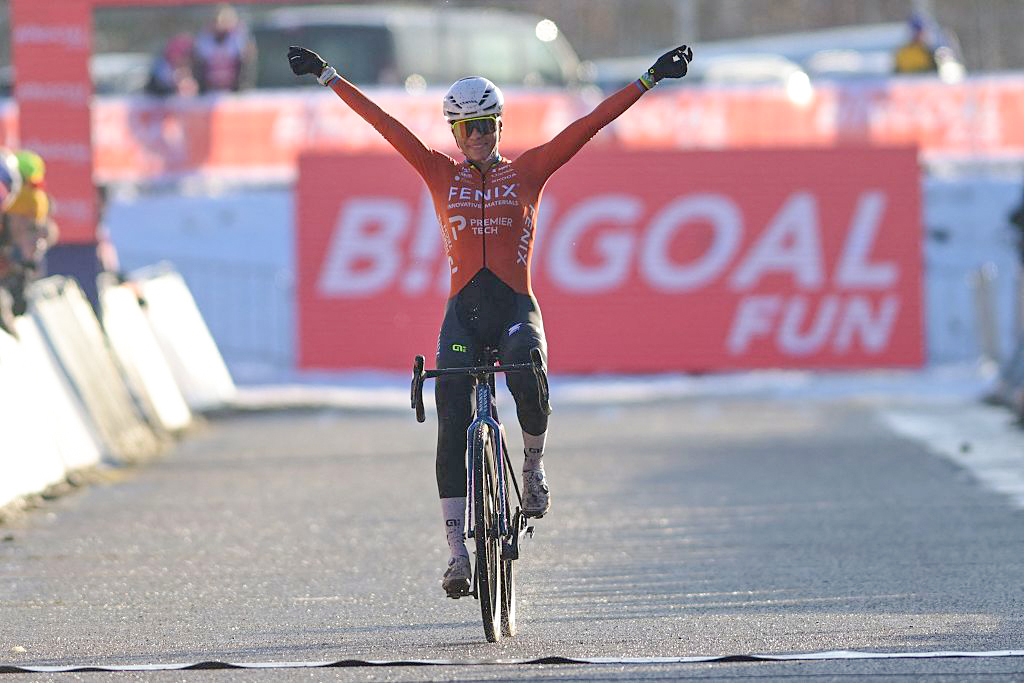Iconic ascents, unpredictability and 'a little bit of craziness' - Tales from the women's Giro d'Italia
From the very first winner in 1988, 'La Mamma Volante', to the latest 'amazing journey' that put Elisa Longo Borghini in the maglia rosa in her 13th participation
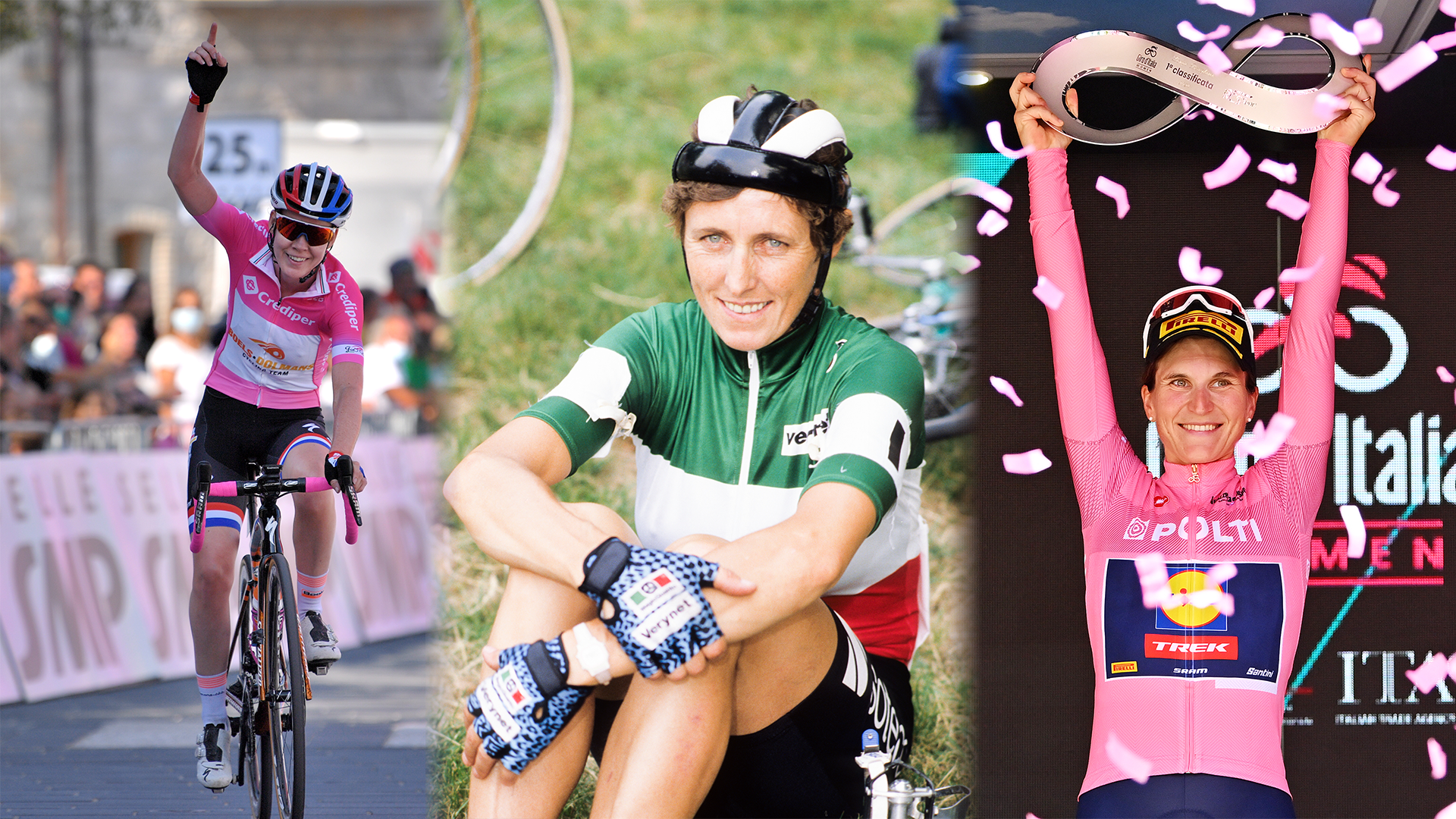
The Giro d’Italia Women is the longest-running women’s professional race, and is as famous for its prestige and historical significance as it is for the mountainous backdrop and unpredictability that have fuelled a myriad of anecdotes and tales stemming from across its 36-year history.
First organised in 1988, it was known as the Giro d’Italia Femminile, but it also had other names such as Giro Rosa and Giro Donne, with the most consistent organiser being Giuseppe Rivolta who ran the event for 18 years. Although it is a race cherished by many it has also had a chequered past, with its status fluctuating over time, although it is now firmly established as a Women’s WorldTour fixture.
The race length has varied, with it sometimes being two weeks, other times 10 days and now, in line with the other Grand Tours, the Giro d’Italia Women is contested over eight days.
One thing that has remained consistent is the competitiveness of the races, the toughness of the climbs and the gladiatorial achievements of the wearer of the maglia rosa and the stage winners, all of which have been aided by their dedicated teammates over the years.
Cyclingnews speak with six overall champions who look back and share the most compelling tales from their experiences at La Corsa Rosa.
Maria Canins – inaugural overall winner, 1988
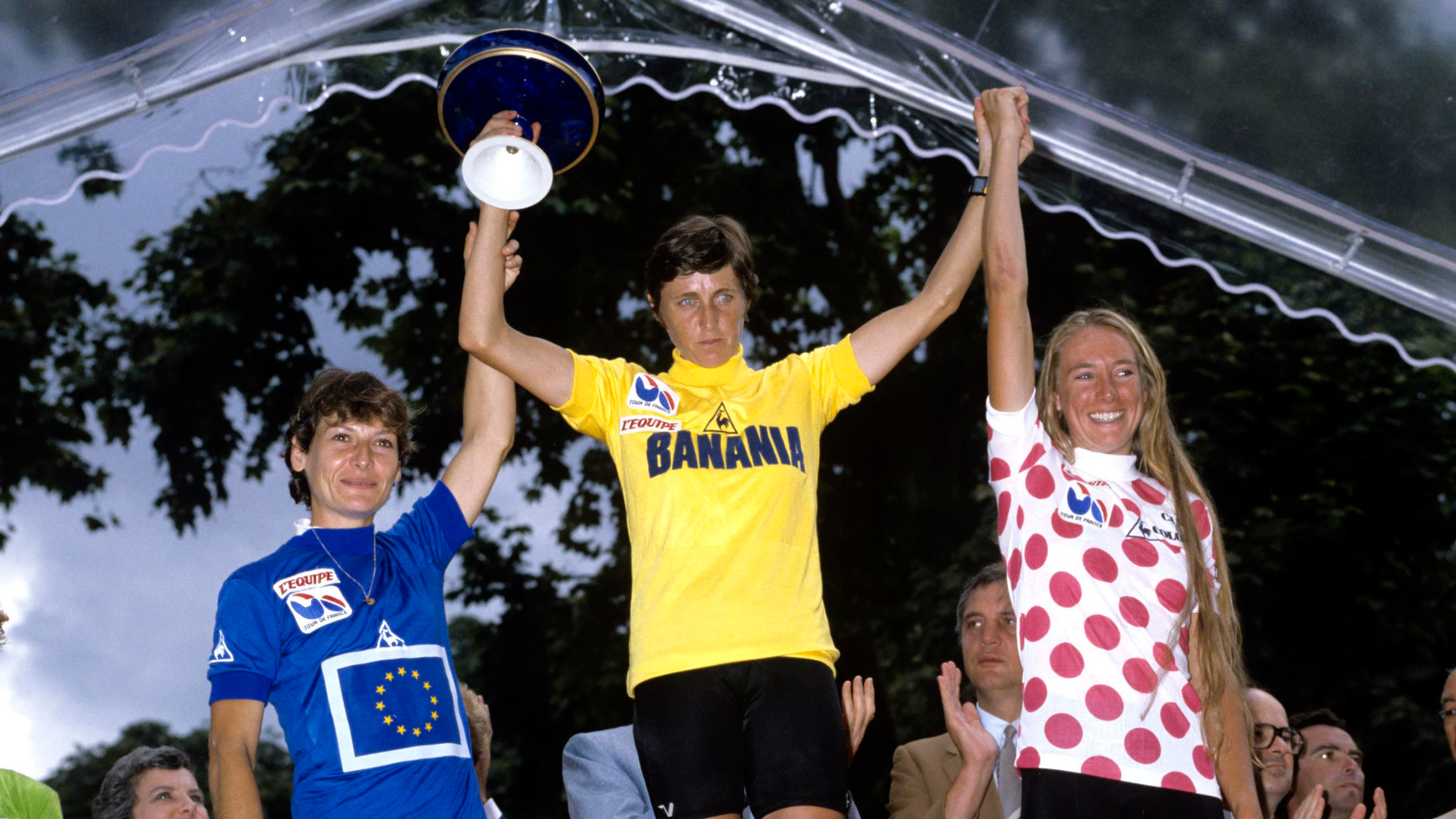
- La Mamma Volante
When I competed in the Giro d’Italia in 1988, I was already quite well-known because I had won the women’s Tour de France in '85 and '86, and I got silver in the World Championships when they were held in Italy in '85.
I was a bit of a novelty for the fans because I got into racing late, after having been a cross-country skier. I also had a young daughter, which was not something that women athletes did in those days. I was nicknamed “La Mamma Volante” and sometimes “Coppi in a skirt”!
At that time, women didn’t race as professionals. We were amateurs and did it for the love of the sport rather than the money. In a way, I liked that because I could race the way I wanted, without wearing an earpiece and having a sports director telling me what to do. I would have felt slightly under pressure if the sport had been heavily sponsored, like we have today. I think too much money can spoil the pleasure of just doing what you love.
The race started in Milan and finished in Rome. Riders raced in national teams, and Italians could also race for their club teams, for which I was a member.
I won the race because I won the time trial at Dogana San Marino. I had targeted that stage because I had lost time, and I needed to turn things around.
In the previous stage from Comacchio, it was very windy along the Adriatic coast, and people weren’t really riding as a team. Somewhere near Cesenatico, a crosswind cut the peloton in half. I ended up in the second group, while my rivals, like Petra Rossner, Elizabeth Hepple and Roberta Bonanomi, were in the front group. I worked so hard into the wind to reach the front group, but no one wanted to work with me because they knew how strong I was, and they weren’t willing to help me. It was clear that they wanted me out of contention. I pedalled like mad, trying to limit the time loss, but I still lost a lot of time.
So it was really down to the time trial for me to get back some time. I worked so hard and managed to win and gain back time. Our final stage into Rome was a beautiful day, and lots of fans came out to watch us. I felt like a star as people asked for my autograph, and the media were there. We were even on the cover of Gazzetta dello Sport – something that doesn’t happen so much today.
Fabiana Luperini – overall winner, 1995‒1998 and 2008
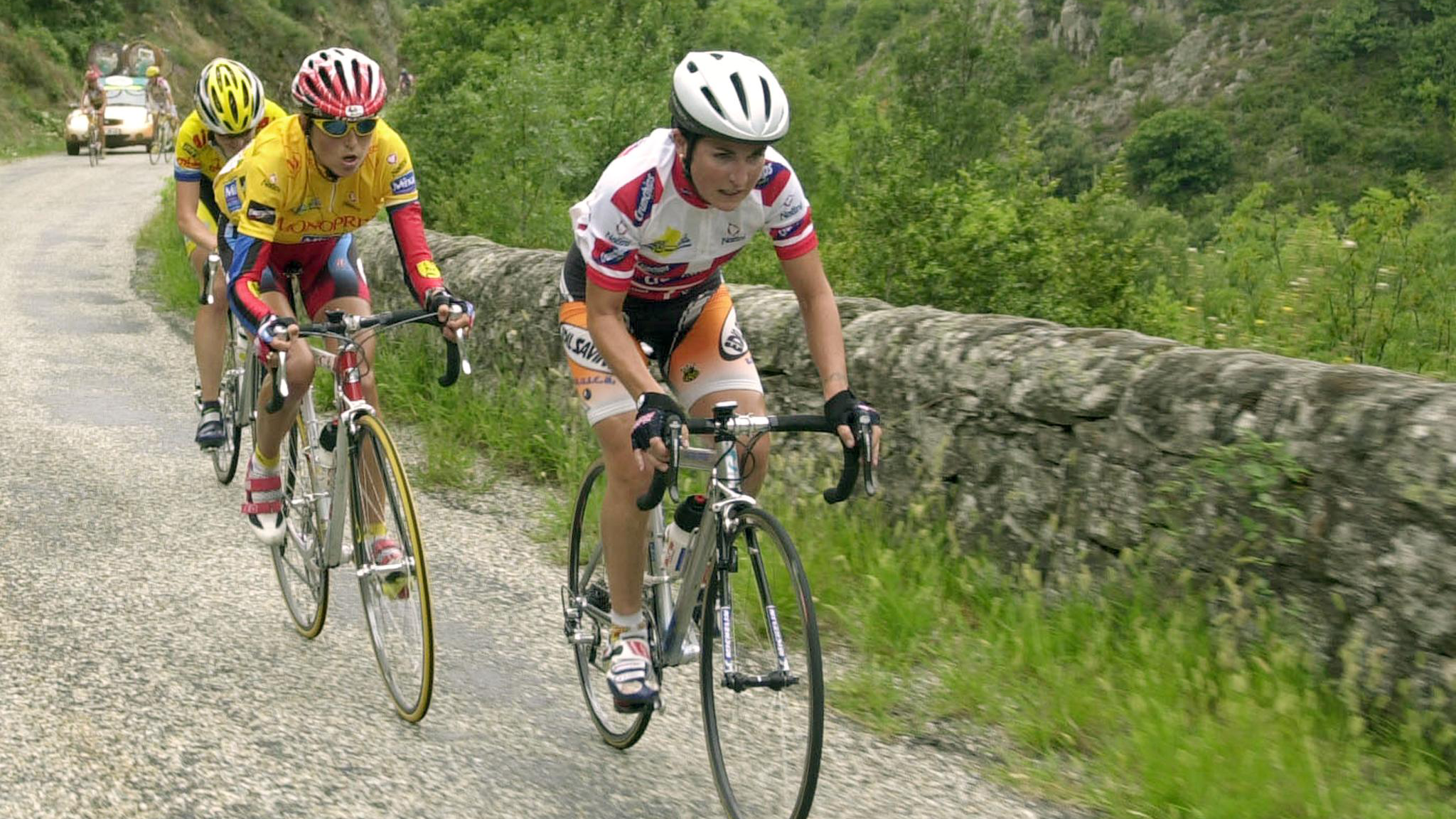
- The record holder
I have won the Giro d’Italia five times, and I hope this record can last as long as possible! Annemiek van Vleuten and Anna van der Breggen have both won it four times, though Van Vleuten has retired. So, we will see how Van der Breggen goes. It won’t be an easy record to break. It was not easy for me to win it five times, in any case!
I guess one of the reasons I won more times than anyone else was that my body was well-suited to stage races, as I also won the Tour de France a few times.
In terms of training, I started using a power meter around 1995, and I also had a heart-rate monitor, though I never used them during a road race as I preferred to race on feeling. I would track my performance by carrying out monthly tests on a hill near my home in Tuscany.
The Tuscan hills definitely helped make me stronger and the mild weather, even in winter, meant that I could do decent training all year round. Furthermore, I hung out with a group of special friends who would let me join them on their training rides – people like Michele Bartoli, the Guidi brothers [Leonardo and Fabrizio], Andrea Tafi, and Mario Cipollini. A couple of times a week, I would train with them, and that really helped my performance. I learned a bit from all of them, too, but the person who taught me the most was Michele Bartoli. Even if he didn’t have the same characteristics as I did for stage races, I found that after doing a training ride with him, a woman’s race was like a walk in the park!
The Giro was quite tough back then because the race lasted almost two weeks and we had high mountain passes as well as very long transfers. So, after you had done a stage, straight away it would feel like you were starting another race when you’d have to do a three- or four-hour car journey before you could get any proper rest. The heavy training I did had made me stronger, but luckily, my natural strength also made me able to cope with the transfers.
My first victory, in 1997, was special because I won it on Monte Zoncolan, which was included in the women’s Giro for the first time. That was a great moment in women’s cycling. I was in the maglia rosa, and my win on Zoncolan confirmed my overall victory. The finish line wasn’t right at the top, but about 3 km before the summit. It was still pretty tough, though.
Coming into this stage, I already knew the climb as I had practised it in the months leading up to the Giro. On the day I was in pink, and I knew I wouldn’t need to attack, though it would be more likely that others would try to attack me. I recall there was a long three- or four-woman breakaway with riders low down the GC, including one of my teammates, Luisiana Pegoraro. We were hoping that my teammate could win it from this group, but then our sports director told us over the radio that Luisiana was not feeling great. So another of my teammates, Roberta Bonanomi, a former Giro winner herself, turned to me and said, “Fabiana, if you catch the girls in front, you could win the stage – go for it, it’s an important climb.” So I rode as hard as I could to catch the women and won. I gained two or three minutes on Edita Pučinskaitė, one of my nearest rivals at the time.
In 2004, I narrowly came second to Nicole Cooke. She was a very strong rider and was going well but I think her win was helped by the late rule change around the team time trial, which gave her team an advantage over ours. We had been told in the months leading up that the result would be taken on the fourth rider across the finish line, and so we trained up a strong four-woman team. But then, the day before the stage, we discovered that the time would be taken on the third rider across the line. Nicole’s team had three very strong riders, but their fourth rider was significantly weaker. So, I'm convinced that if they had stuck to the rule of the time of the fourth rider, then I would have won the Giro because although her team’s top three riders were faster than our top three, our top four riders were faster than her team’s top four riders.
Looking back at my Giro wins, I’d say all of them were special, but if I had to choose one, then I’d say the last one because it was 10 years after my fourth victory. I was 34 years old and had a less carefree mindset compared to when I was 23 or 24. I didn’t actually think that I would be able to win 10 years after my last victory, but that year, 2008, I had won a lot of races, and I seemed to have found a run of good form. I had won the National Championships, the Giro di Trentino, and other races where I was up against strong competition, so I came into the race feeling strong. However, I knew that winning the Giro wouldn’t be easy.
I went into the maglia rosa on Monte Serra, practically on home roads as I lived nearby. Once I was in the pink jersey, I kept it to the end of the race. It was a truly special victory, and 2008 was a very important year for me.
Joane Somarriba – overall winner, 1999‒2000
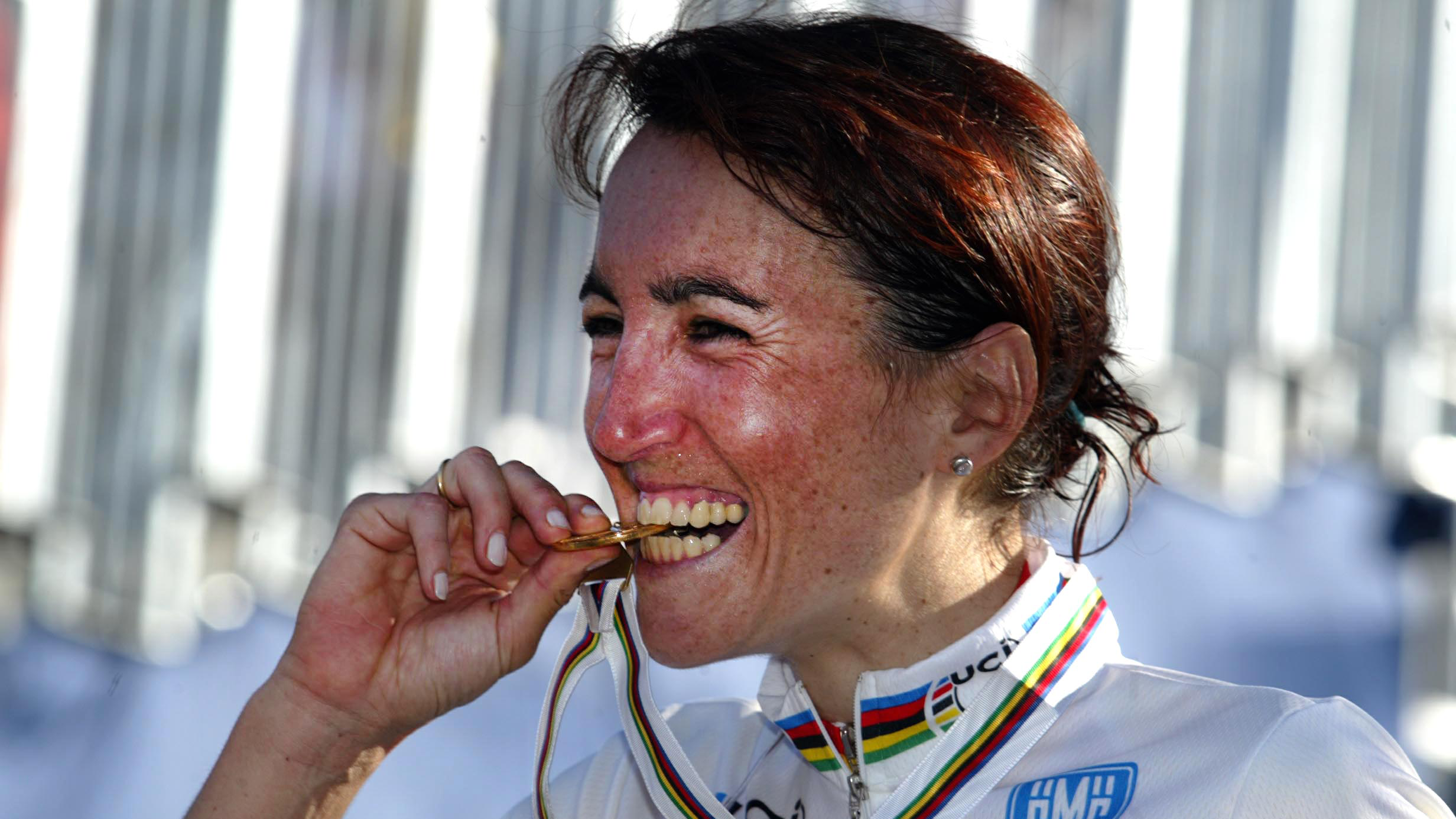
- When the pupil outclasses the teacher: protégée of Fabiana Luperini
I took part in the Giro for the first time in 1996 with the Spanish national team. There were no Spanish teams that could take us to these types of races, as Spanish-sponsored teams didn’t have the means to take us abroad. So the Spanish federation took us to race in the Giro and the Tour de France. I came fourth in that edition, which was won by Fabiana Luperini, and I was taken on to race on an Italian team with Luperini. So, for that reason, the Giro is a race that I really like.
I moved to Italy and stayed near Forli. I really enjoyed being in Italy – I liked the people, the fans, and the races were really well organised.
Coming from Spain to race in Italy was a massive leap for me and a big change from what I had known in Spain. I had only really raced against Spanish riders, and we didn’t really have team tactics or anything. We just raced for ourselves. Suddenly, I was racing against the best in the world in a team with a support structure and a little salary. We never had that in Spain.
Fabiana Luperini and her teammate Alessandra Cappellotto were very strong riders, and Fabiana was like a mentor to me. My job was to help her win the Giro in 1998. It was a real honour to be on the team with her and help her win it, and it was a lovely experience where I learned a lot, especially about team tactics.
I worked very hard because I was also very slow on the mountains. I would finish with the broom wagon! But I was stubborn and wasn’t going to give up. I was determined to come back stronger and I was motivated. I think that my early years of cycling in my village near Bilbao, where volunteers taught the children about the discipline of training in cycling, have really helped and I am eternally grateful to the people who spent their time getting me into cycling.
In Italy, I had a contract, but at times it wasn’t worth the paper it was written on, as people didn’t always honour it, or we would be paid less than stated or late. It was never much money anyway, so financially it was difficult. Fortunately, my parents had a restaurant so I would work there to earn a bit of money and my parents would also give me money.
Then in 1999 I moved to a different team and Luperini became one of my big rivals. We were rivals in sporting terms but we had deep respect for one another. She was the best climber in the world, in my opinion. She was so fast on the climbs and made me suffer so much when trying to keep up with her. I was right on the limit of my strength, but I knew I had to stay on her wheel because I could time trial better than her, and that would be my way of getting past her and others like Alessandro Cappellotto or Nicole Brändli. Time trialling was my trump card for winning the Giro.
When I won the Giro in 2000, my main motivation had been to use it as preparation for the Tour de France, which was starting from Bilbao the following year. It was a very proud moment for me to have the Tour start from my home area. So I did everything I could to be ready for the Tour when it was in my town. Winning the Giro would give me confidence and also a psychological advantage in preparation for the Tour. Despite my relative success in races, I didn’t have a strong self-belief, even if my managers and teammates did. But my coach and sports director helped give me a lot of confidence and support.
For me, my stand-out memories of the Giro d’Italia were always on the last day when you give a big hug to your team-mates after a win. You feel all the tension of the race disappear and you feel a strong emotion knowing that you were part of a team where people did so much to help you in the objective of winning the race. All the riders and staff share in the happiness as we say, “We did it!” I am still in touch with some, like Fany Lecourtois and others, who were on my team.
These days I enjoy leisure cycling with my husband Jose Ramon Gonzalez Arrieta, who is a former professional racer, and our three children. Sometimes we go to climbs where we raced and it is only now that I get to appreciate the beauty of the landscape because at the time I just had my head down chasing Fabiana Luperini’s or Nicole Brändli’s wheel!
I really enjoy watching the Giro d’Italia Women, and it is wonderful to be able to see it on TV. It was great to see Elisa Longo Borghini win last year. She’s a racer I like a lot, and I look forward to watching it again this year.
Anna van der Breggen – overall winner, 2015, 2017, 2020‒2021
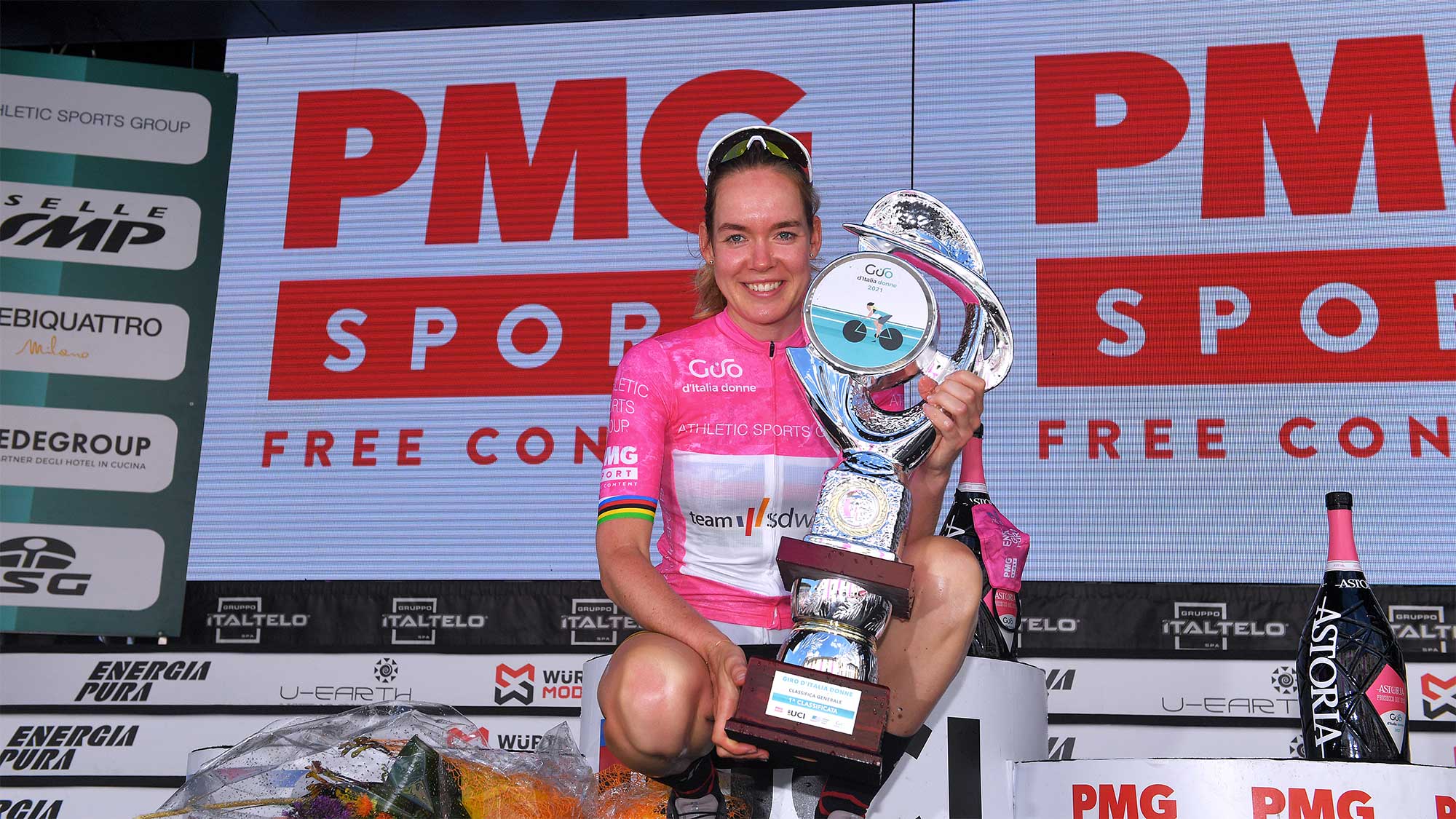
- Cool, calm and killing it on Cascata del Toce
In my time, the Giro was the biggest race that we had for a long time. The Vuelta did not exist and the Tour did not exist, so for us it was really about the Giro. This is still a really special stage race to do. It is the Italian way of stage racing. Maybe it’s a bit less organised than other stage races, but I like the roads, and this one is special because it has been running for a long time.
My first time competing in it, I was with the Netherlands National team in 2010, and I was not used to climbing. So it was one big sufferfest. At one point, I had the best young rider’s jersey, but I didn’t keep it as I lost it in the climbing stages. For me, it was a really big learning curve in stage racing in the first years. Our coach, Martina, was like a mum to us. She taught us everything about what to do in stage racing – how to recover, what to eat, what not to eat.
I remember one time we had dinner in Italy. Of course, it started with pasta, and we just thought to eat as much pasta as possible. So we ate a lot of pasta, and then the waiter came back and asked, “Who wants more pasta?” So we said, “Yes, we’ll have more.” But we didn’t know that in Italy afterwards we would have more pasta with meat and veggies. So he was laughing, and he didn’t say anything. And that’s how we learned how it works in Italy!
It was quite a few years, in 2015, before I first won the Giro. I had been up against a few American riders, notably Evelyn Stevens and Mara Abbott. It was a real fight up to the last day, which made the victory nicer.
In other Giro races, I had many battles on the hills with Elisa [Longo Borghini] and with Annemiek [Van Vleuten] too.
I particularly remember my last victory because I won it on the mountain time trial [Formazza-Cascate del Toce]. A lot of the riders were on road bikes, but I felt quite good on a TT bike as the uphill was not too steep. So I used that especially because at the beginning it was flat. I gained a lot of time at the bottom, so actually, I could do some good climbing on the TT bike. I had been training a lot on the TT bike, and I was going well because I was the World TT Champion at that moment and it gave me motivation.
As well as my regular rivals like Annemiek, Elisa, and Kasia [Niewiadoma-Phinney], the heat is a big issue in the Giro. So you need to take care and make sure that you are okay and can keep up. Being in pink puts you under pressure. If you have one bad day and get dropped, then you’re finished. That’s the hardest thing about the Giro, especially as they generally put the hardest stages at the end, and it’s so hot.
When racing, I am aware that I don’t have the fast muscle fibres to sprint, like Lorena [Wiebes], so I have to ride steadily but strongly and pick my moment to go off the front when it can be effective. So I always have to stay calm in the race.
You need to be in the best shape possible, and also after the stages, it is important to recover fast and get the right nutrition. When you have the leader's jersey, you have to go to doping control every day, and your opponents don’t have that, so you are already at a disadvantage. In order to be fast through anti-doping controls we arranged it so that my forms were filled in already so that I could be done within 10 minutes every day. I would also be eating already while waiting. That’s all part of the rhythm you need to get in a stage race. It is important to stay relaxed as if you stress out about things, it’s only going to be more difficult.
I know that Fabiana Luperini has won it five times, and I have won it four times, but for me it isn’t really about catching records. It’s more about being in good shape and trying to go for a win. If you win, then that is already an achievement. Anyway, I didn’t expect to be doing the Giro again, so being here and racing well is a good thing already.
It feels nice to be back racing and I am really enjoying it, so I am happy with my decision to come out of retirement. There is a difference in the level, though. Since women’s racing has become more professional and bigger, it makes sense that the girls are in better shape.
You can really feel it in the race. Some years ago, if I needed to go to the front of the race, I could just go through, whereas now this kind of thing is getting way more difficult than before. And it’s the same thing with these small climbs. The pace on the climbs and at the beginning of races is also a lot higher. So it takes more out of you at the beginning of races, and you have less energy in the final, and I have had to train for this. I am looking forward to this year’s Giro, but I think it’s going to be tough.
My favourite victory out of all four was when I won it for the first time. Winning something for the first time is always when it feels best because you hadn’t done it before, you weren’t sure how things would go and you had to work hard to make it happen.
Winning the Giro feels special. It’s true that the Tour is bigger, and it’s great that we have it, but the Giro is more relaxed. You don’t have so many interviews. You are just focusing on the race, and that’s it, and Italian food is a big bonus. I just had a big plate of really good pasta. I just love the simple life of cycling. In Italy they understand, and they are really supporting it, and all the towns you go through are keen. So, for me, the Giro remains the most special one out of the Grand Tours.
Annemiek van Vleuten – overall winner, 2018‒2019, 2022‒2023
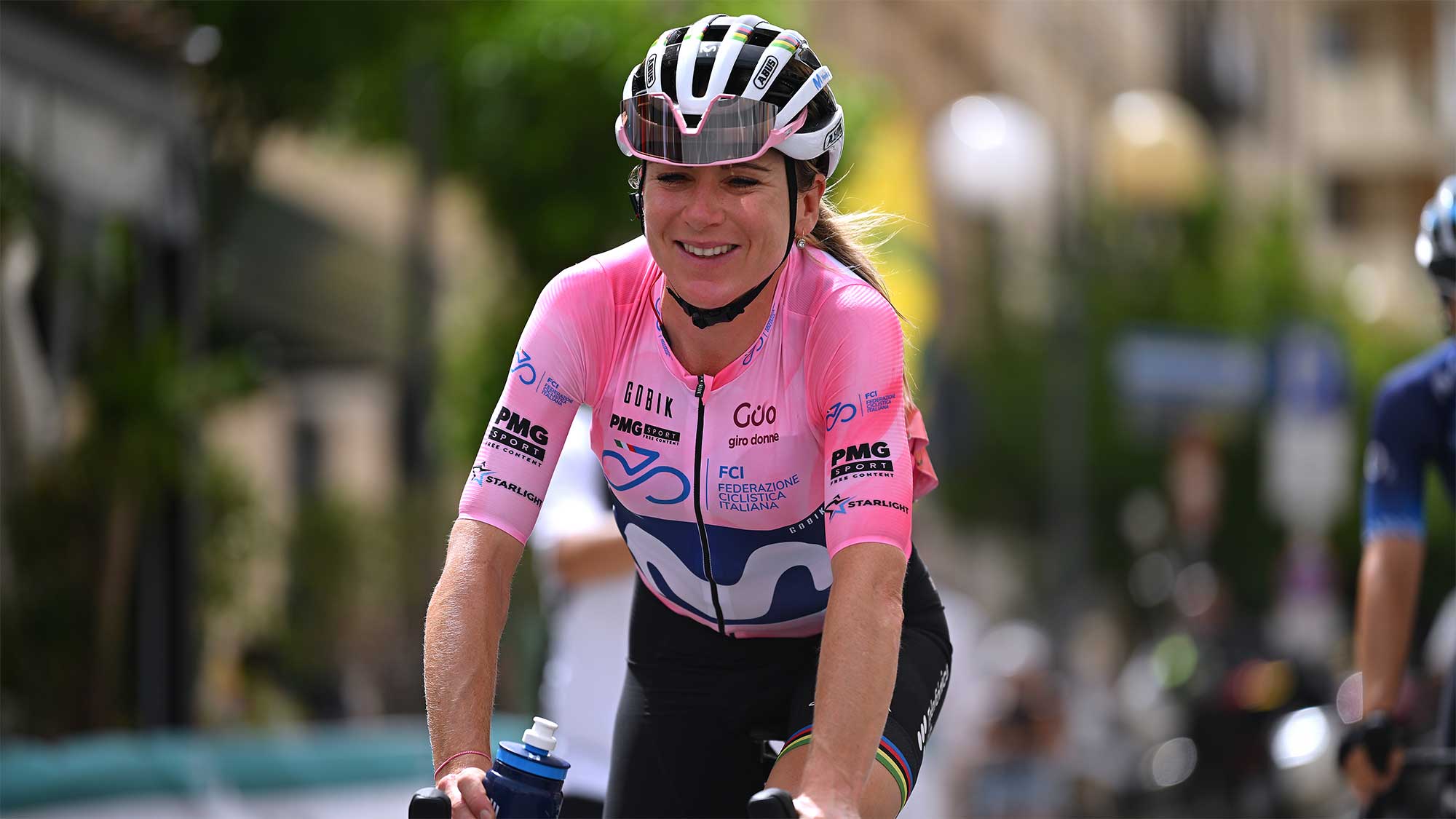
- La Cannibale
Giro Donne was our biggest race after the Tour de L’Aude stopped in 2010. It was 10 days long and was always a really special race as it was longer, harder and you really felt like you were at the Giro. All the villagers were out and the place was decorated in pink. It felt like a big race.
The Giro was never a target for me until 2017. After the Rio Olympics I realised I was a climber and then Gene Bates, team director at Jayco AlUla said, “I think you should target the Giro next year.” Before 2016, team directors would say that I am not a climber and I should focus on races that I can win. So I won the prologue in 2014 and 2015, and then my goal was to win a stage.
My first Giro Donne was in 2010, and I did it with the Dutch National Federation, dressed all in orange, and we had a really cool team with Marianne Vos as our leader. It was my first time in a really big race and I remember every stage of it. It was special to see and to go to all the stages. I remember going to Slovenia, and the race started in Trieste that year. It was really hot and everyone was swimming in the Adriatic Sea the day before the race. I treated the race as a learning experience, and then I would help Marianne to win whenever I could. I also remember going to Livigno. It was my first time there, and it was a beautiful place. Then we did Stelvio the next day. It was a supercool experience, and Livigno and Stelvio have a special place in my heart.
Marianne didn’t win it in 2010, but she won in 2011. That was one of my most memorable moments as it was her first win and it was really special to be part of the team that helped her to win.
A couple of difficult moments for me were in 2012 when I crashed out with a broken collarbone just before the Olympics. So that was a challenging situation. In 2013, I had a problem with the narrowing of an artery in my leg. It was like I was riding with half a leg and in the end, I had to DNF. I also crashed out in 2020. Being in the hospital, wearing my maglia rosa and with a broken wrist was not a great preparation for the World Championships at Imola a couple of weeks later.
The setback that I found hard to swallow was in 2017. We had decided with my sports director and my coach, that I would target the Giro because I could climb.
I had been hoping to do a good time trial on stage 5, and so I was saving myself in the stage the day before, but I took it too easy and was talking at the back of the peloton. I wasn’t fully focused, and I lost two minutes on the leaders. I was so disappointed with myself. The following day, I rode hard in the time trial and won it, and I ended up in third place on GC. If I had been more focused on Stage 4, I could have won the Giro. That was a hard lesson for me.
So, in 2018, I was properly focused. I won the maglia rosa in the stage that finished on Monte Zoncolan. It was from the harder, steeper side, and was epic. I remember the team cars were not able to drive up behind me because it was so steep, so my team DS was following me with my spare bike on his shoulder while riding a motorbike. We had special gearing and had to sit right at the front of the saddle; otherwise, your front wheel was coming off the ground. I rode Monte Zoncolan in quite a good time. Some guys remind me of it and say that they tried to beat my time but couldn’t. So after that, I could no longer deny that I was a climber. Winning here after the disappointment of the year before, together with my team, Mitchelton-Scott, was super incredible, especially as it was my first time winning the Giro. So maybe 2018 was probably my sweetest win at the Giro.
2022 was also special because I won all three Grand Tours, but the Giro was just the first one out of the three big goals I had that year.
My last Giro, in 2023, was also really special because I was in super good shape, and I have to say that when the Tour de France Femmes happened two or three weeks later, I was not in that shape, and that was disappointing. It was quite sad, and I still don’t know what happened there. For the Giro, with my DS Jorge Sanz, we made jokes because on paper there was only one stage uphill that really suited me, and he challenged me to find way more opportunities to make my mark. For example, in moments where there was just a one-or two-kilometre climb which was not long enough or hard enough, I was also able to make the difference there. So instead of only winning one stage, I won three out of ten stages, and every day I was in the mix for the win. In fact, I remember some epic fights with Antonia Niedermaier.
The Giro is one of the hardest races on the women’s racing circuit. During the Giro, I have done the Mortirolo a couple of times from different sides, Stelvio and Zoncolan, so the organisers are not afraid to include tough climbs, though one year they had to take out the Gavia because of the snow. The organisers put in epic climbs and that gives the race more meaning and it feels like they take us seriously. They give us the opportunity to show that women can also ride up those hard climbs and have beautiful races up there.
At one Giro Donne where I invited my mother to come to the race – maybe it was 2019 – that was super special and she had to come up on the podium with me. They introduced my mum and said, “La Mamma di Annemiek van Vleuten”. It was like she was the queen. That was so Italian. That’s why I love the race. Okay, so there are other things that happen, like there were moments when we were sent the wrong way, or it was a bit chaotic. But somehow I liked to deal with a little bit of that craziness. People think that I am superstructured but in fact I go well with a bit of disorder and I was laughing a bit about it. People were always friendly towards me and I always found the fans at the Giro to be very respectful. They really are fans of the men and women. They don’t make any difference between the male and female athletes. They just talk about athletes and you can really feel that. That’s why I loved the Giro when I raced.
Elisa Longo Borghini – overall winner, 2024
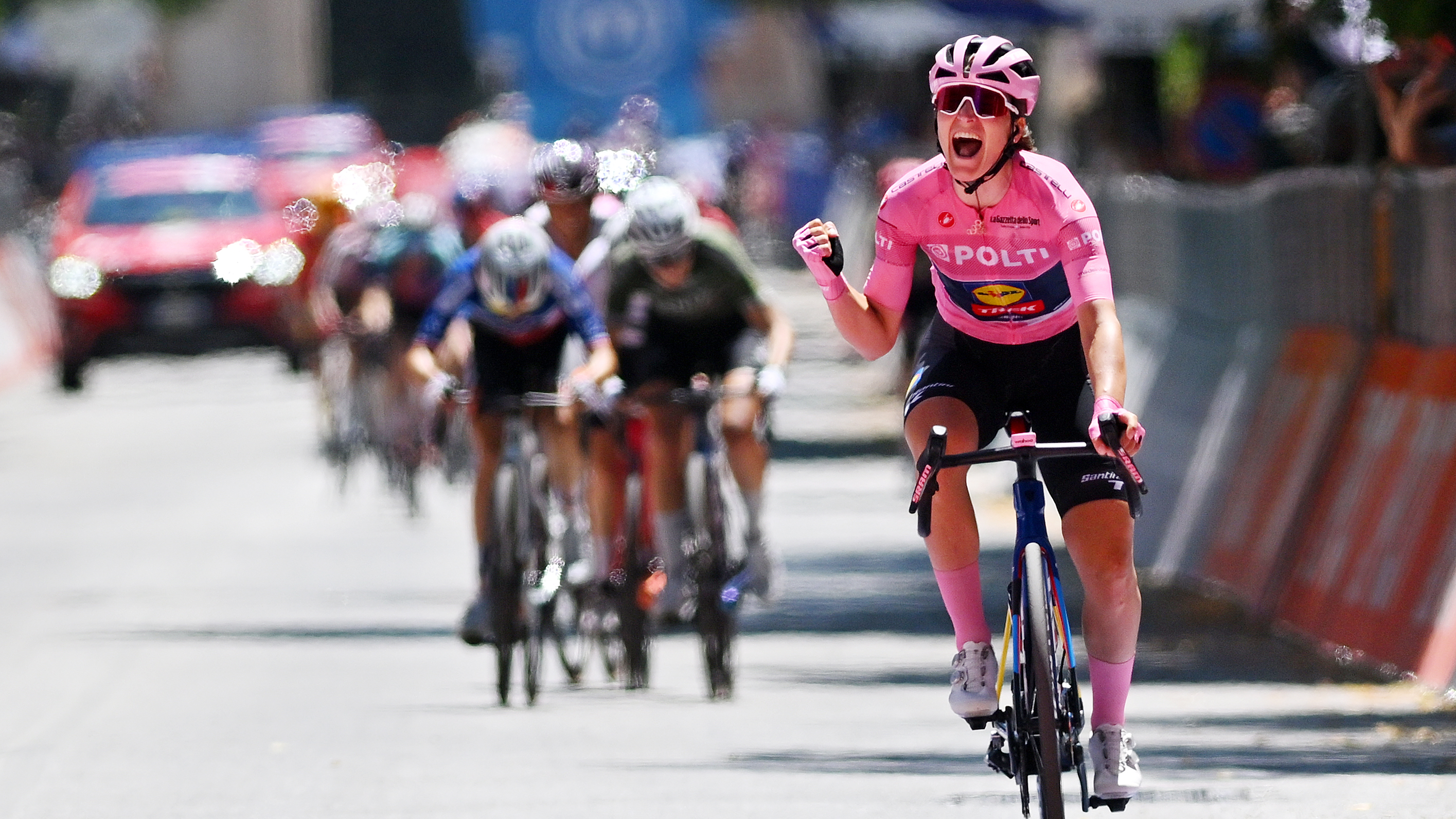
- From starry-eyed novice to teary-eyed champion
My first participation at the Giro was in 2011 and, to be honest, that’s the best feeling I've ever had because being 19 years old, starting the Giro, you feel the thrill and you don’t know what you’re facing. There were 10 stages, and you were like “Okay, it’s just an amazing feeling – I’ve got to go through these hard stages, and I want to know what I’m getting and how far I can endure it!” It was just this incredible feeling you have when you’re super-young and you just want to understand where your limits are. I was very excited.
I remember every single stage and I had the freedom to do whatever I wanted. I was just trying to handle as much as I could for as much as I could. I didn’t have any pressure, so it was a nice Giro d’Italia. I really enjoyed it and I was really satisfied afterwards.
My family came to watch me at one stage, I think Ceresole Reale – I think it was the last stage, as they had to bring me home! So I had my mum and dad there. My family have also watched me at Verbania. I come from a town 10km from Verbania, and there are stages where I have gone through there or started there, in 2013, 2014, 2015, and 2018. On one occasion, when the stage crossed my town, everyone came out and cheered me on. It was an amazing feeling.
Last year was one of the best memories I have had from the Giro. It was an amazing journey. It was incredible because it was a victory that came at the very end of the Giro, and everything came down to the last stage. So it was thrilling and very emotional.
I won the time trial in Brescia and kept the pink jersey from the first to the last stage. Strangely, I felt very relaxed coming into the last stage as I knew I only had one task – to win the Giro! I didn’t need to do anything other than follow Lotte [Kopecky] and beat her on the line at L’Aquila. That was the only thing I had to do, and I focused on that.
Sometimes you have to keep things simple. We had in mind to let the breakaway go to keep the bonus seconds also at the intermediate sprints. And that was the best because these three riders went and I just carried out my strategy.
It was a very nice preparation for the Olympics but unfortunately COVID hit me in between, so I was not in good shape at the Olympics.
I would say that the Giro, the Tour and the Vuelta are all equally hard. They are spread over eight days with challenging stages. They are similar in terms of length and elevation gain, and durability, so I would say that the Giro is as challenging as the Tour and the Vuelta,because with all of them they are physically and mentally demanding.
I think that this year’s Giro is very well-designed, beginning with a time trial and then harder and harder stages and finally the stage at Imola where the World Championships were held, so I do like the parcours. My feelings are positive. The team wants the victory, and for my part, I am going to go and give it 110% and the most important thing is to give everything. If you’ve given everything and then come second, then you can still be happy that you gave everything of yourself in that performance. My team will go to the Giro to try to go for the GC, and then we will try to have a solid performance at the Tour de France.
I am not targeting any particular stage because if you are going for GC , you have to watch every stage. For sure, you need to really focus on doing your best time, and then you have to be very attentive in all the stages, so it is a different approach to racing from those who may be targeting a stage.
I feel more of an attachment to the Giro d’Italia because it matters a little bit more as an Italian. But of course, because it is a prestigious race and the oldest of the three tours as well.
For a new rider doing the Giro for the first time, I would just say get hydrated because it’s going to be warm! Then enjoy it to the very last stage. Don’t let hard stages get into your mind and just feel how lucky you are to be riding the Giro d’Italia Women in 2025, where all the media are focused on us and we have so much attention. We can really enjoy it.
As RCS Sport develops the race over the course of its contract with the Italian Cycling Federation, and the race and the competition for maglia rosa glory become wider and wider, we can look forward to more champions and more stories.
Subscribe to Cyclingnews for unlimited access to our Giro d'Italia Women coverage. Don't miss any of the breaking news, reports, and analysis from one of the biggest women's stage races of the season. Find out more.
You must confirm your public display name before commenting
Please logout and then login again, you will then be prompted to enter your display name.
